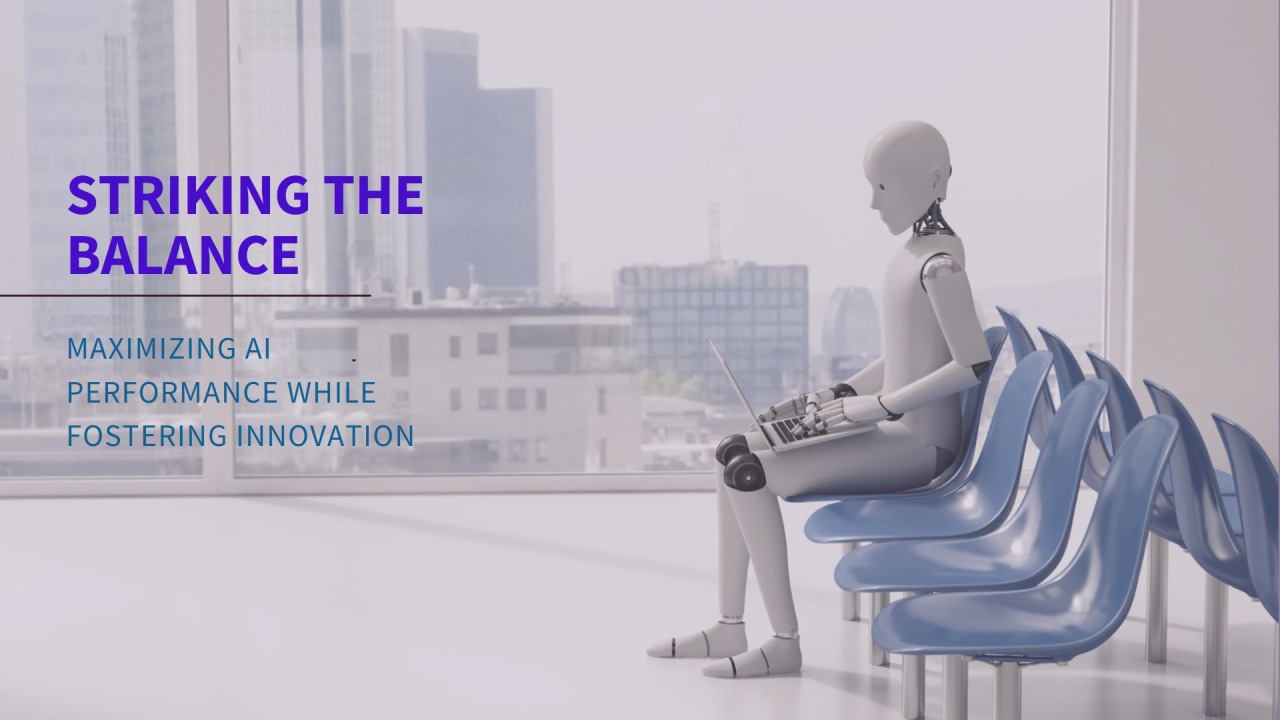As organizations leverage AI for competitive advantage, achieving high performance while encouraging innovation can be challenging. Leaders need to balance immediate expectations with long-term goals, ensuring that teams are free to explore groundbreaking ideas without compromising on quality. Here are strategies to help you strike this balance:
1. Set Realistic, Strategic Goals
Clear, measurable goals serve as a foundation for AI projects, providing direction while aligning team efforts with broader business objectives. These goals should encompass both performance metrics (e.g., accuracy, speed) and exploratory milestones, allowing for innovation within defined limits. Setting realistic expectations also helps team members focus on delivering value without feeling overwhelmed by overly ambitious targets.
Example: An AI team tasked with improving customer support could aim for a 15% increase in issue resolution speed while simultaneously experimenting with natural language processing to enhance chatbot responses.
2. Promote a Culture of Experimentation
Innovation thrives in environments where team members feel safe to experiment and take calculated risks. Create a “safe-to-fail” culture that encourages trial and error, allowing your team to test new ideas without the fear of judgment or setbacks. Recognize efforts even when they don’t yield immediate results, as these learnings often fuel future successes.
Tip: Use pilot projects or minimum viable products (MVPs) for new AI concepts. By testing them in controlled environments, your team can evaluate feasibility and make necessary adjustments before a full-scale launch.
3. Foster Continuous Learning and Cross-Disciplinary Skills
AI evolves rapidly, so continuous learning is crucial for staying competitive. Encourage team members to keep their skills current by investing in training, certifications, and cross-functional education. Cultivating a well-rounded team with diverse skill sets also promotes innovative thinking, as new perspectives can lead to more creative solutions.
Approach: Provide access to online courses or workshops, focusing on skills that enhance the AI team’s versatility. Cross-functional training can also be beneficial, helping team members understand areas such as data engineering, UX design, or business strategy, which can spark more holistic innovation.
4. Emphasize Iteration and Continuous Optimization
Incorporate an iterative development approach to build flexibility into your AI projects. By regularly gathering feedback and refining solutions, teams can adjust as they learn, ensuring the project remains aligned with both performance and innovation goals. This iterative approach reduces the risk of project burnout while supporting a sustainable pace for innovation.
Practical Example: A team developing a recommendation algorithm can start with basic features and enhance it over time by adding personalized elements, testing improvements with small user groups, and adjusting based on feedback and performance data.
5. Measure and Celebrate Small Wins
Breaking large projects into smaller, achievable milestones allows teams to experience progress and boosts morale. Celebrating these wins, no matter how small, reinforces the importance of steady progress and inspires continued innovation. Monitoring key performance indicators (KPIs) and using metrics to track both performance and creative strides is essential for long-term success.
Suggested KPIs: Alongside core performance metrics like accuracy or response time, include innovation-related KPIs, such as the number of experiments conducted, new techniques trialed, or time spent on exploration. Tracking these metrics will demonstrate that innovation is valued just as much as performance.
6. Encourage Collaboration Across Teams
Cross-departmental collaboration fuels innovative AI development, bringing fresh perspectives to existing problems. Collaboration between AI engineers, data scientists, and other departments (e.g., marketing, customer service) can lead to unexpected solutions and enhance AI performance.
Approach: Arrange regular check-ins with cross-functional teams to discuss challenges and share insights, creating an open forum for exchanging ideas and building on each other’s knowledge.
7. Use Agile Principles to Adapt
Agile principles support flexibility and quick adaptations, which are essential in AI projects where outcomes can be unpredictable. Use sprint reviews and retrospectives to analyze progress and adjust strategies, giving teams the agility needed to pivot if early results are less than ideal.
Balancing high AI performance with an innovative mindset is key for any organization seeking to push technological boundaries. By setting realistic goals, fostering an experimental culture, and investing in learning, teams can achieve high standards without stifling creativity. As your organization continues to evolve, these practices can help turn challenges into opportunities, setting the stage for breakthrough AI solutions that are as adaptable as they are effective.
What are your go-to strategies for balancing high-performance AI and fostering a culture of innovation?
Contact us: Click here
For more updates:





